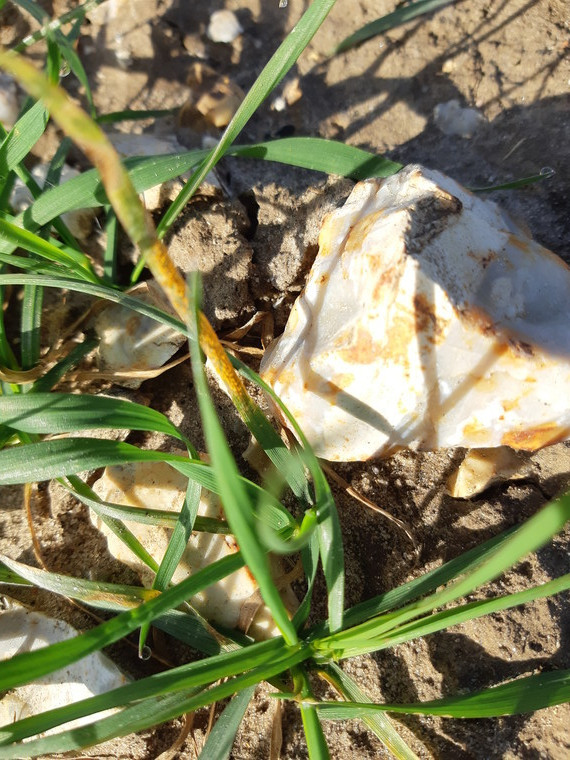It’s worth remembering that the wheat yellow rust resistance ratings on the AHDB Recommended List for cereals, are based on assessments of the performance of varieties at the adult plant stage. The scale of 1-9, where a high figure shows high resistance – isn’t a guide to likely disease levels on seedlings and juvenile plants in the winter and spring, he points out.
Few varieties have all-stage yellow rust resistance, which is expressed throughout the life-cycle of the wheat plant; the majority are susceptible at the seedling stage according to the UK Cereal Pathogen Virulence Survey (UKCPVS) seedling assessments, and become resistant at later stages, as adult plant resistance (APR) is expressed.
He points out that all-stage resistance, sometimes known as seedling resistance, is generally controlled by a single gene, which may be effective against all races or just some races. However, APR is generally controlled by several resistance genes, and the more genes that are stacked together in a variety, the longer the resistance is likely to remain effective.
To add to this, are the ever changing dynamics of rust races, he notes. Resistance at any growth stage is dependent on the race of the yellow rust pathogen present. New races regularly appear and certain yellow rust ratings on the AHDB Recommended List, may need to be revised downwards accordingly.
Does plant breeding hold the answer?
Breeders are doing their best to keep on top of the disease by introducing novel genes and stacking resistance into varieties by using marker assisted selection (MAS).
“However, it’s important that both the industry and breeders are aware of race changes, as this will have implications on the progression of new germplasm – you have to remember that breeding is not a short term activity,” says Ron Granger, Limagrain’s arable technical manager.
“The Warrior populations of yellow rust are a serious threat to the wheat crop, so growers and agronomists should be aware that all crops need to be monitored closely for the disease, to prevent the need to fire-fight.”
He points out that although some varieties do have seedling resistance, it should not be taken for granted that they will remain resistant. “One thing we have learnt about the Warrior population, is that it consistently evolves, and therefore no resistance is “bomb proof.”
“If you are finding yellow rust on resistant lines now or at a later time in the season, it is important that you send samples into the UKCPVS for analysis,” he adds.
For more information, or to check if a variety should have seedling resistance, visit the AHDB UKCPVS website, here: https://ahdb.org.uk/ukcpvs
So, what does all this mean in the field?
Mr Granger says, that the overwhelming message to growers and agronomists for this season, is to continue to monitor all wheat crops throughout the season for yellow rust – even if a variety has a high yellow rust resistance rating – and treat accordingly.
“Around the country, we are seeing reports of yellow rust in both earlier established crops and more apparently in later drilled wheat crops – which account for a large area of the wheat in the ground this season.”
“We know from experience that yellow rust can be a problem in later drilled wheat crops, especially if left to develop.”
“Remember that we had a very mild winter and spring, so the build up of inoculum has not been suppressed by the typical cold temperatures and frosts that we would usually expect.”
“However, we are in the fortunate position where we still have the chemistry to eradicate and control the disease. Any yellow rust should be treated as soon as it is detected in the crop with a well targeted fungicide spray programme.”
“It’s important that we do not allow heavy infections of yellow rust to develop, as this gives the yellow rust population opportunities to adapt and change,” says Ron.
The advice from crop production specialists, Hutchinsons, is that where symptoms are found – particularly if foci of yellow rust are detected, crops should be sprayed with a suitable triazole fungicide at the T0 timing, around GS 2530, rather than wait for adult plant resistance to kick in, which may not occur until flag leaf emergence.
“It is important not to delay treatment to coincide with the T1 application at GS 31/32, when leaf 3 is emerged, or to bring the T1 application forward so compromising overall disease control,” says the firms technical development director, David Ellerton.
“Products containing tebuconazole, cyproconazole or epoxiconazole, will have the strongest knockdown against yellow rust, whilst the strobilurins, azoxystrobin and pyraclostrobin, will add extra persistence but with a lower level of curativity.”
“Where follow up sprays for yellow rust at T1 may be necessary, SDHIs, such as benzovindiflupyr, may be utilised, as this is particularly strong on the disease.”




